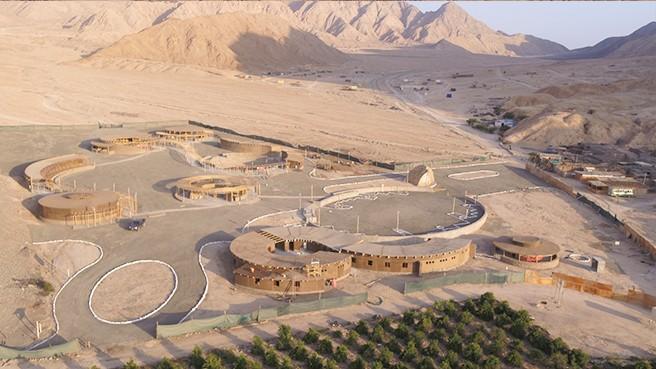
3,800-year-old city discovered in South America
In a groundbreaking archaeological discovery, a 3,800-year-old city has been unearthed in Peru’s northern Barranca province. Dubbed Peñico, the ancient city is believed to have served as a vital trading hub, connecting Pacific coast cultures with those in the Andes and Amazon regions. This remarkable find has sent shockwaves through the archaeological community, offering a glimpse into the lives of ancient civilizations that once thrived in South America.
Located in the northern part of Peru, Peñico is situated close to the area where the Caral civilization, considered the oldest in the Americas, developed around 5,000 years ago. The Caral civilization, known for its sophisticated architecture and advanced irrigation systems, is a testament to the region’s rich cultural heritage. The discovery of Peñico, therefore, is a significant milestone in understanding the evolution of human societies in South America.
According to the Peruvian Ministry of Culture, the archaeological site of Peñico was discovered in 2020, but it took several years of excavation and research to confirm its significance. The team of archaeologists, led by the Peruvian Ministry of Culture and the University of the Pacific, has been working tirelessly to uncover the secrets of Peñico.
Initial findings suggest that Peñico was a thriving city, with a population of several thousand inhabitants. The city’s architecture is characterized by the presence of pyramids, temples, and plazas, which are typical of pre-Columbian civilizations in the region. The team has also discovered evidence of advanced irrigation systems, which were crucial for the city’s agricultural practices.
One of the most striking features of Peñico is its strategic location. Situated in the coastal region of Peru, the city was perfectly positioned to facilitate trade between the Pacific coast and the Andes and Amazon regions. This would have allowed for the exchange of goods, ideas, and cultures between different societies, playing a significant role in the development of the region’s economy and politics.
The discovery of Peñico has also shed new light on the history of the Caral civilization. While the Caral civilization is known for its advanced architecture and agriculture, its connection to the Pacific coast and the Andes and Amazon regions was previously unknown. The finding of Peñico has revealed that the Caral civilization had extensive trade networks, which allowed them to share knowledge, goods, and ideas with other societies.
The significance of Peñico extends beyond the borders of Peru. The discovery has implications for our understanding of the development of human societies in the Americas. The find suggests that the region was home to complex societies with advanced trading networks, which is a departure from the traditional narrative of the Americas being inhabited by isolated, nomadic tribes.
The Peruvian Ministry of Culture has announced plans to open the archaeological site to the public, providing a unique opportunity for tourists and researchers to explore the ancient city. The site will also be equipped with modern facilities, including museums, visitor centers, and educational programs, to ensure the preservation and promotion of Peru’s cultural heritage.
In conclusion, the discovery of Peñico is a groundbreaking find that has the potential to rewrite the history of human societies in South America. The city’s strategic location and advanced architecture provide a glimpse into the lives of ancient civilizations that once thrived in the region. As we continue to uncover the secrets of Peñico, we are reminded of the importance of preserving and promoting our cultural heritage, and the significant contributions that archaeology can make to our understanding of the past.






